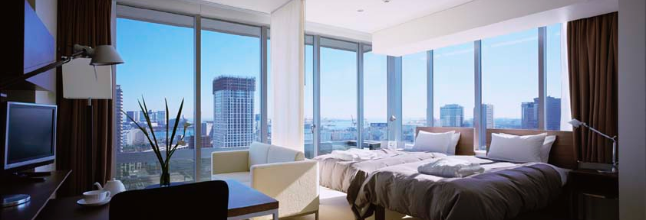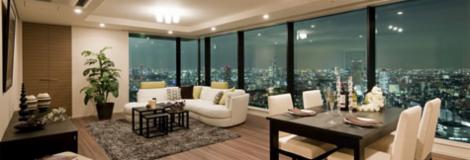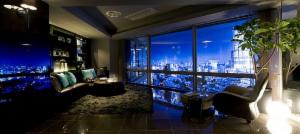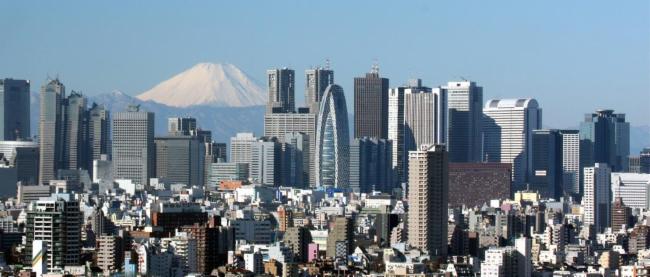Residential Luxury Real Estate
Tokyo, Japan
Tokyo Luxury Homes.com offers a professional and discreet service for Japanese, Expatriates and international clients when buying luxury property in Tokyo, throughout Japan and globally.
Our residential property specialists provide the highest standards of consultancy and introductory services relating to the buying or the selling of luxury homes, apartments, villas, mansions, houses or condos in Tokyo, Japan and overseas.
We provide our clients with a large network of international clients and a collaboration with the best firms and consultants in the real estate business in Tokyo, Japan. We also have coverage throughout Asia, Africa, London, Europe, UAE and the Americas, focusing on Luxury residential properties.
Our residential services
- Property search
- Property Visit (Pictures and/or Videos)
- Representing Buyers
- Representing Sellers
- others



Cities within Tokyo
Tokyo is legally classified as a "metropolis," and is treated as one of the forty-seven prefectures of Japan of Japan. It is not administered as a single city.
Eastern Tokyo Metropolis
Central Tokyo, situated in the eastern portion of Tokyo Metropolis, was once incorporated as Tokyo City, which was dismantled during World War II. Its subdivisions have been reclassified as special wards (tokubetsu-ku). The twenty three special wards currently have the legal status of cities, with individual mayors and city councils, and call themselves "cities" in English. However, Tokyo's twenty three wards are often counted as one city.
Western Tokyo, known as the Tama Area (Tama-chiiki ) comprises a number of municipalities,
Suburban cities:
The core cities of the Greater Tokyo Area outside Tokyo Metropolis are:
- Chiba (population 940,000)
- Kawasaki (population 1.36 million)
- Sagamihara (population 0.73 million)
- Saitama (population 1.19 million)
- Yokohama (population 3.62 million
Tokyo's famous districts
A district with a range of restaurants, clubs and hotels; many pedestrian alleys giving it a local neighbourhood feel. Next to Roppongi, Nagatachō, and Aoyama.
A densely arranged shopping district popular for electronics, anime culture andotaku goods.
A neighborhood of Tokyo adjacent to Omotesando with parks, trendy cafes, and international restaurants.
Major shopping and entertainment district with historic department stores, upscale shops selling brand-name goods, and movie theaters.
Known internationally for its role in Japanese street fashion.
The busiest interchange in north central Tokyo, featuring Sunshine City and various shopping destinations.
Tokyo's center of used-book stores and publishing houses, and a popular antique and curio shopping area.
Home to most of the executive offices of the national government, as well as theTokyo Metropolitan Police.
Marunouchi and Ōtemachi
As one of the main financial and business districts of Tokyo, Marunouchi includes the headquarters of many banks, trading companies and other major corporations. The area is seeing a major redevelopment in the near future with plans for new buildings and skyscrapers for shopping and entertainment constructed on the Marunouchi side of Tokyo Station
The political heart of Tokyo and the nation. It is the location of the Diet (parliament), government ministries, and party headquarters.
A large, reclaimed, waterfront area that has become one of Tokyo's most popular shopping and entertainment districts.
Known for upscale shopping, fashion, and design
Home to the rich Roppongi Hills area, Mori Tower, an active night club scene, and a relatively large presence of Western tourists and expatriates.
The heart of the sumo world. Home to the Ryōgoku Kokugikan and many sumo stables.
A long-time center of shopping, fashion, nightlife and youth culture. Shibuya is a famous and popular location for photographers and tourists.
In addition to the major hotels on the west side of Shinagawa Station, the former "sleepy east side of the station" has been redeveloped as a major center for business.[citation needed]
An area revitalized by being the gateway to Odaiba and the Shiodome Shiosite complex of high-rise buildings.
Location of the Tokyo Metropolitan Government Building, and often regarded as the "center" of Tokyo. The area is known for its concentration of skyscrapers and shopping areas. Major department stores, electronics stores and hotels are located here. On the east side of Shinjuku Station, Kabukichō is known for its many bars and nightclubs. Shinjuku Station moves an estimated three million passengers a day, which makes it the busiest rail station in the world.
Ueno is known for its parks, department stores, and large concentration of cultural institutions. Ueno Zoo and Ueno Park are located here. Ueno Station serves commuters to and from areas north of Tokyo. In the spring, the area is a popular locale to view cherry blossoms.
source: wikipedia
Tokyo, Japan

